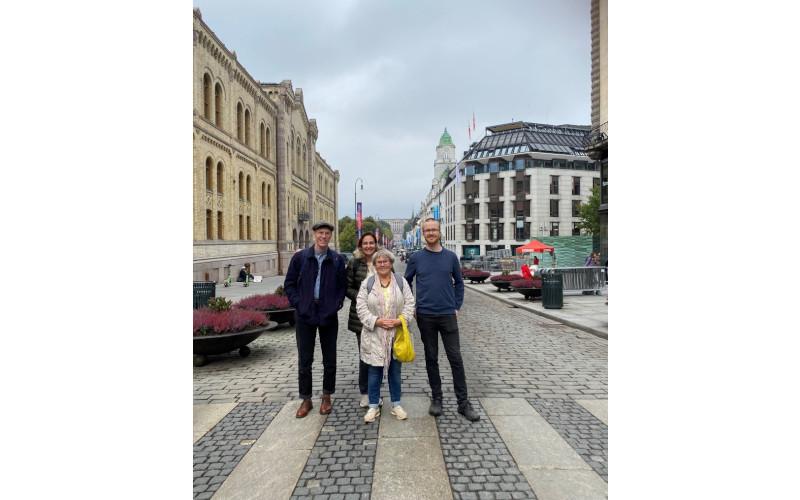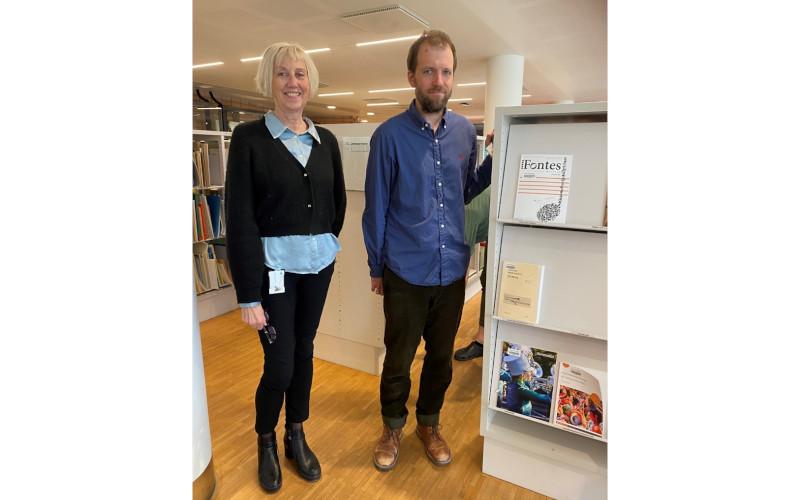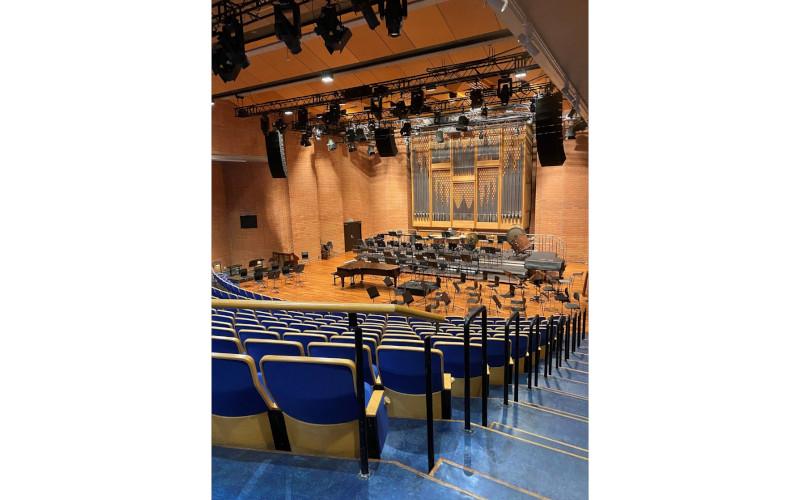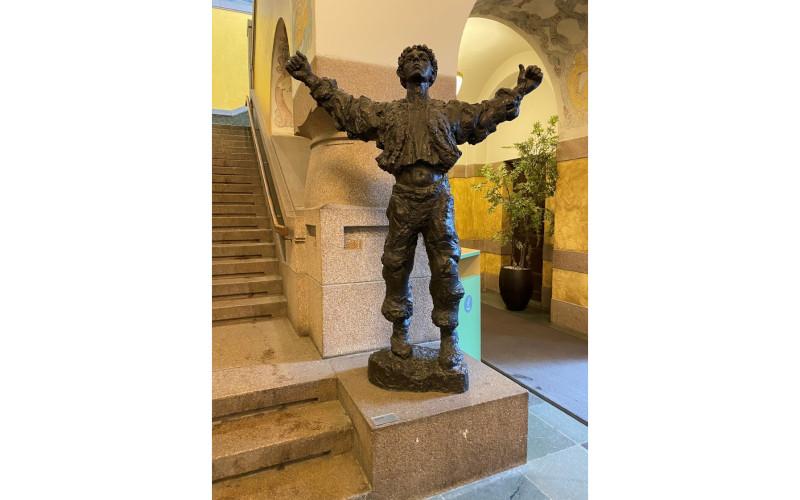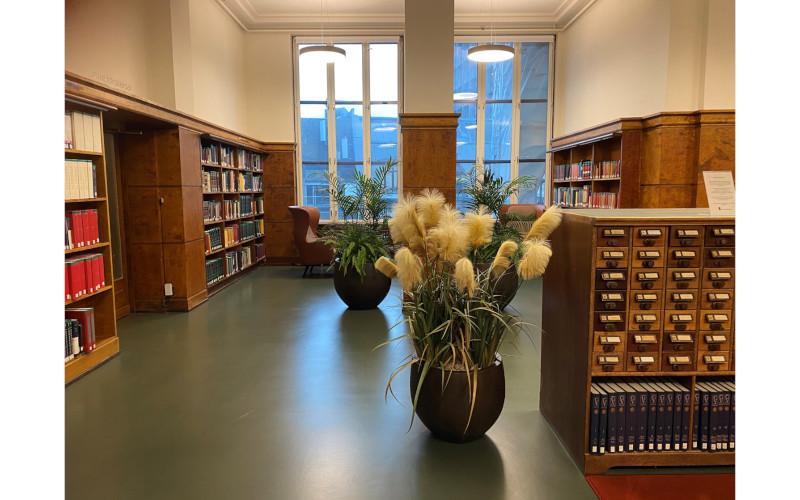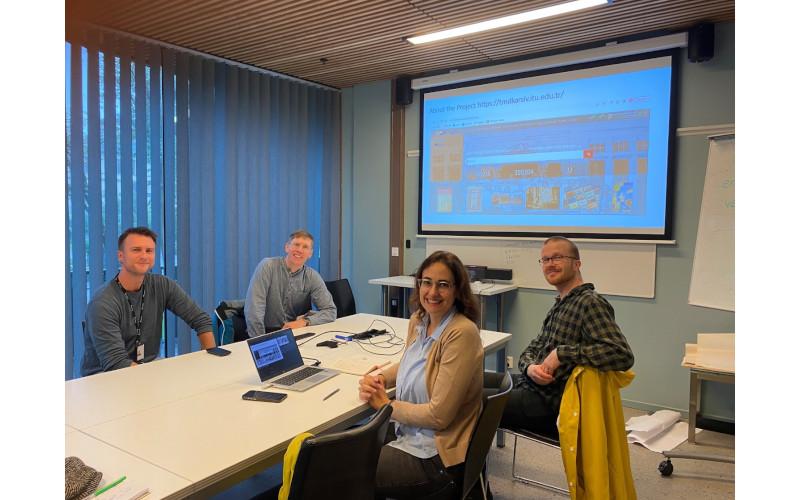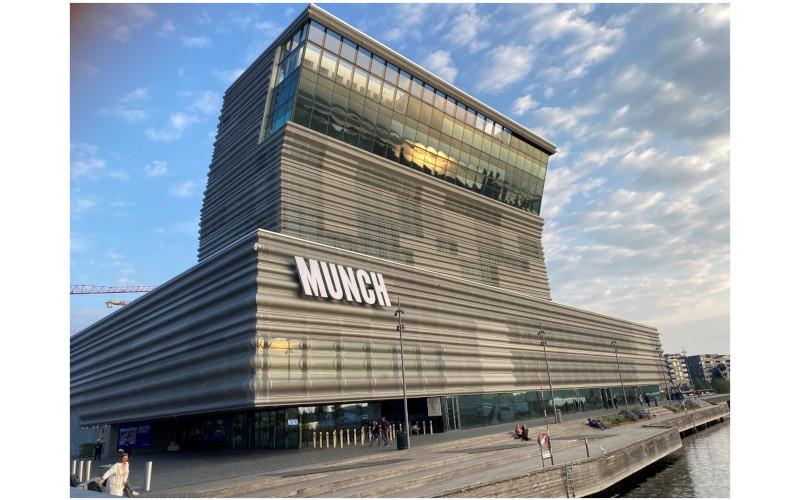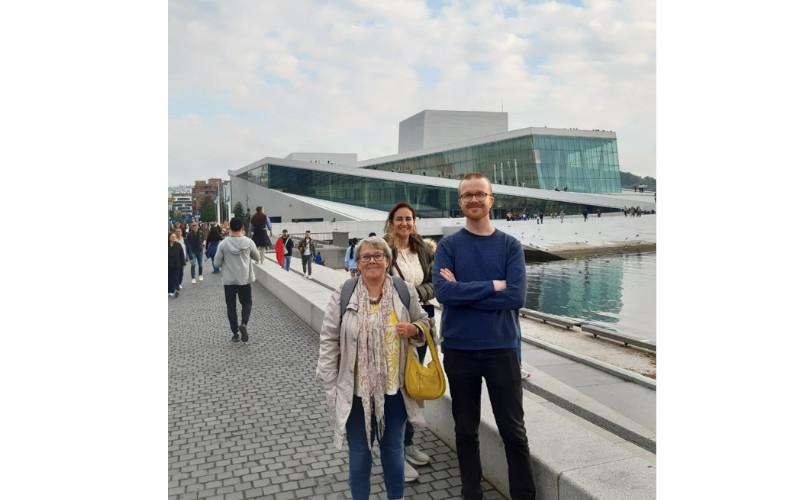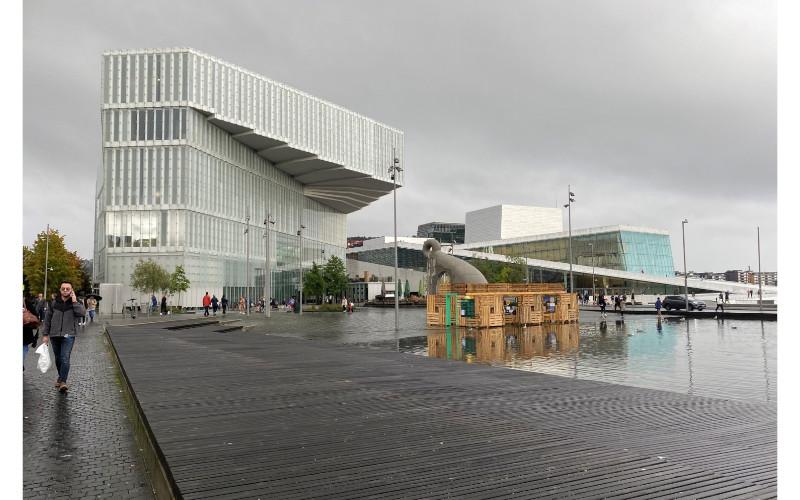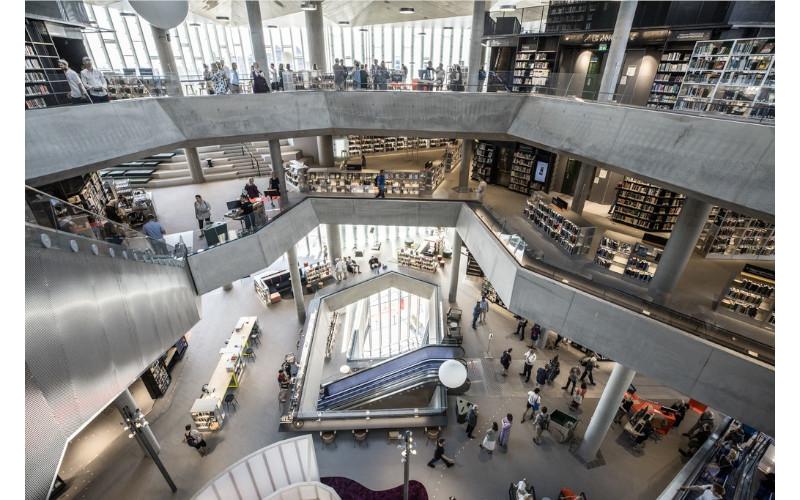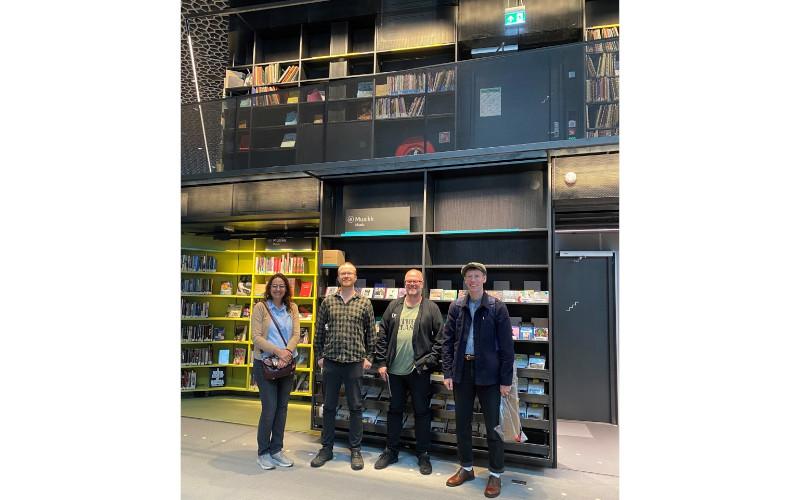Inspired by the many interesting congress diaries from Stellenbosch, I thought I would share another “diary”, but from a city situated slightly further up north, namely Oslo in Norway. I had the pleasure to visit three libraries there on 23-24 September: the Norwegian Academy of Music, the National Library and the Oslo Public Library (Deichmanske Bibliotek). My travel companions were Joakim Lilljegren and Niklas Persson, both colleagues at the Gothenburg University Library. We were joined by a music librarian from Istanbul, Güneş Çetinkaya Şerik, who works at the ITU Turkish Music State Conservatory - Music Library & Archive Centre. Ms Çetinkaya Şerik was our guest in Gothenburg for a week and we spent a very nice and fruitful time together.
The bus trip from Gothenburg to Oslo takes not more than three and a half hours. We were astonished by the new and modern architecture that met us when we entered the city. Oslo has certainly changed a lot during the last few years. After a stroll on the famous avenue Karl Johan (named after the Karl XIV Johan Bernadotte, king of Norway and Sweden 1818 until his death in 1844) we headed towards our first stop: the Norwegian Academy of Music. The Head Librarian, Johan Jørgensen, gave us a guided tour of the library and showed us the catalogue and the several e-resources the library offers. Five librarians work at the library, which is open between nine in the morning to ten in the evening during weekdays (staffed between 9.00-15.00). The library has around 70,000 scores and the acquisitions are mainly based on purchase suggestions. The collections are reserved for students and staff at the Academy, but they can be borrowed as interlibrary loans.
When the tour was finished, we sat down to have a discussion about the many common concerns we have, since we are all serving conservatoires. One of the challenges in any music library today is, as you well know, how to deal with digital scores. We were shown the two templates for licence agreements used in the library – one for individual composers and the other for publishers. The licences and the PDFs are then kept in a separate file, while the printed copies can be borrowed and are searchable through the catalogue. We spent two very useful hours with our Norwegian colleagues. I have always admired how well the library of the Norwegian Academy of Music is run and how well it is integrated with the Academy.
There were no more “official duties” on the first day, so we all agreed to visit the new Munch Museum, opened in 2019. The stunning building is situated by Oslo’s waterfront in Bjørvika, an inlet in the inner Oslofjord. The district is famous for its spectacular architecture and another example is the distinguished Oslo Opera House, created by the Norwegian architectural firm Snøhetta, opened in 2008.
The following day started with a visit to the National Library of Norway, with the appropriate address Henrik Ibsen’s Street, where David Stephen Grant was our host. He gave us a thorough presentation of the Music Division and showed us around the old and atmospheric building. The Division has twelve staff members, each with a different specialization. Mr Grant has manuscripts and historic archives as his area of expertise. The National Library of Norway was established as recently as in 1989. Previously the University Library of Oslo carried out the tasks that normally fall to a national library. At the same time a repository was founded at Mo i Rana, situated just south of the Arctic Circle, as a part of the national library. Its responsibility is to preserve the legal deposit and unique materials. This is where mass digitization is carried out, also of music materials. Sweden looks with envy at our neighbouring country with a national library that is digitizing its entire collection! The digitizing programme started in 2006. According to the library’s estimation, it will take 20–30 years for the entire collection to be digitized.
Since 2014 the Music Division of the National Library serves as a publishing service for contemporary Norwegian music called NB Noter. The task has been taken over from the Norwegian Composer’s Society. The number of scores is around 10,400, dating from 1940 to the present. The collection grows with 250-300 titles per year (around 30% now composed by women). This music can be ordered directly from the catalogue. The catalogue also includes music published by Norwegian and international publishing houses. The income from selling and renting materials in NB Noter (in agreement with the composers, of course) goes to a fund that pays for the service. No royalties are paid to the composers. External freelancers are sometimes employed to produce parts from the scores. The library does not engage in promotion, however – this is the task of Music Norway. The National Library also houses national archives of folk music, popular and traditional song, jazz and popular music.
After the presentation of the National Library, Güneş Çetinkaya Şerik introduced us to the commendable project “Turkish Music Archives” that was completed in 2023. This large digitization project was a collaboration between Istanbul Technical University. Turkish Music State Conservatory and the Istanbul Development Agency. It was carried out by the conservatory library, with Ms Çetinkaya Şerik as the project coordinator. The archive consists of thirty-two different collections. Twenty-six of them are personal archives donated by composers, musicians and scholars, with sheet music, manuscripts and all sorts of ephemera – even musical instruments. The remaining 6 collections consist of records, audio cassettes, periodicals, posters, slides, instruments and Braille music Around 48,000 music materials were digitized and catalogued by Ms Çetinkaya Şerik and her staff. She created a new descriptive model for cataloguing with enriched metadata, appropriate for these particular materials.
Following the two presentations we all felt a need for a restorative break in the café. The owner previously ran a restaurant awarded with a Michelin star and we were not disappointed. Before leaving, we also had a look at the permanent exhibition of the library. There were many historical documents of great interest. I learned, for example, that that 99.95% of the Norwegians voted in favour of dissolving the union between Norway and Sweden in the referendum that took place on 26 October 1905. I decided not to let this spoil the rest of my visit, although I was deeply hurt…
Our final study visit was to the Oslo Public Library which is beautifully situated in Bjørvika. The new main library opened in 2020 and was naturally affected by the pandemic for the first couple of years. I was amazed to hear that the library nowadays accepts as many as 6-7,000 visitors per day, so it is indeed very popular. The opening hours are Monday to Sunday, from early morning to late evening.
The librarian Stian Björnsen Hope kindly showed us around the building. As for many public libraries nowadays, the Oslo Public Library offers not only books, scores, CDs etc., but also so-called maker spaces. The users are invited to work with 3D printers, poster makers, sewing machines, podcast studios and more. There is also a small stage, a cinema, a couple of digital pianos and a corner where people can listen to music on all formats, including vinyl. Everything was very impressive, but unfortunately the other side of the coin is that the actual music collection is constantly shrinking. The material is heavily weeded on a regular basis. Perhaps one can go so far as to say that the focus is less on collections than on offering a space for different types of activities.
We were all very satisfied with what we had learned and experienced during our two days in Oslo. Four exhausted librarians slept all the way back to Gothenburg. At least I did.
- Facebook Like
- Share on Facebook
- Log in to post comments


